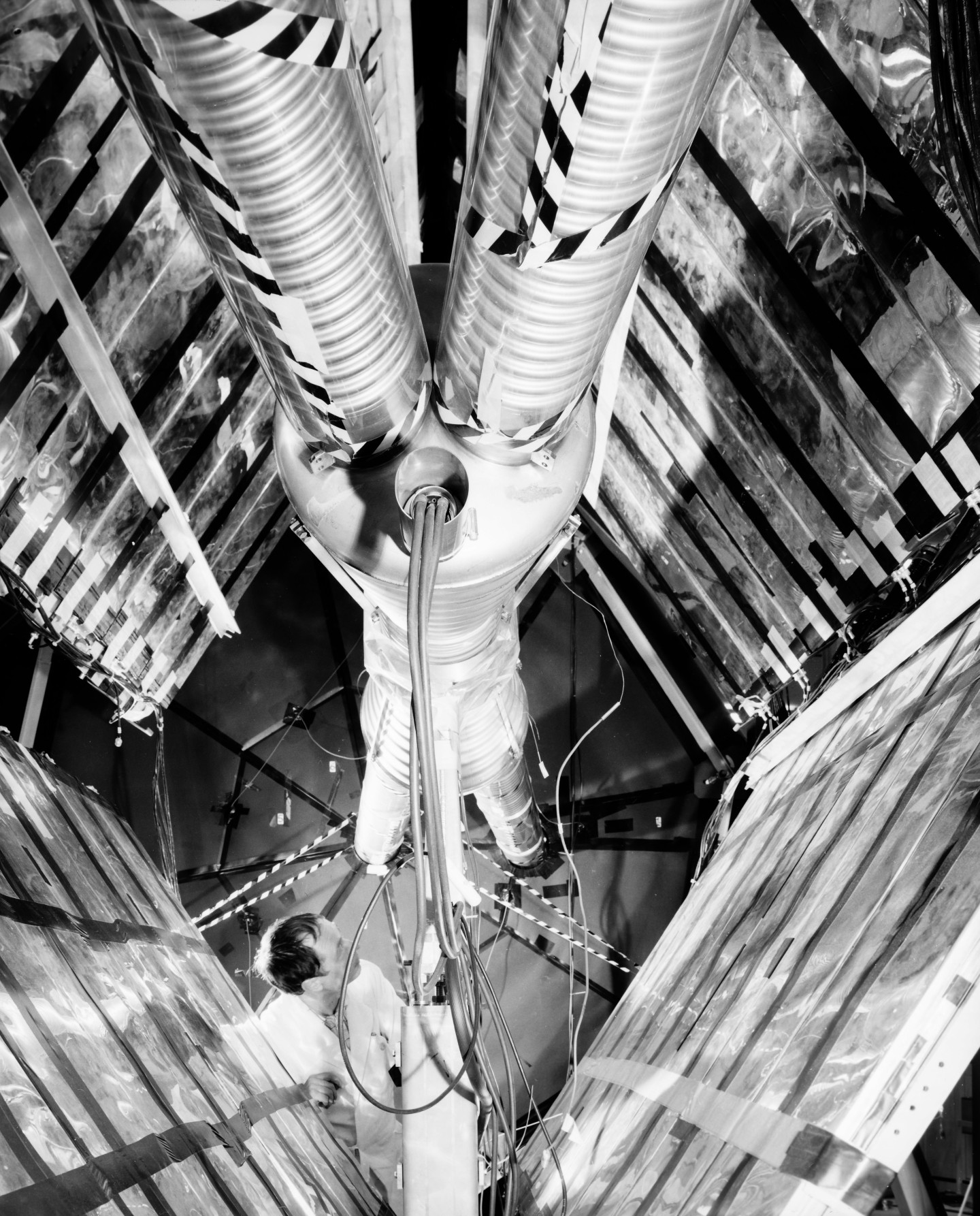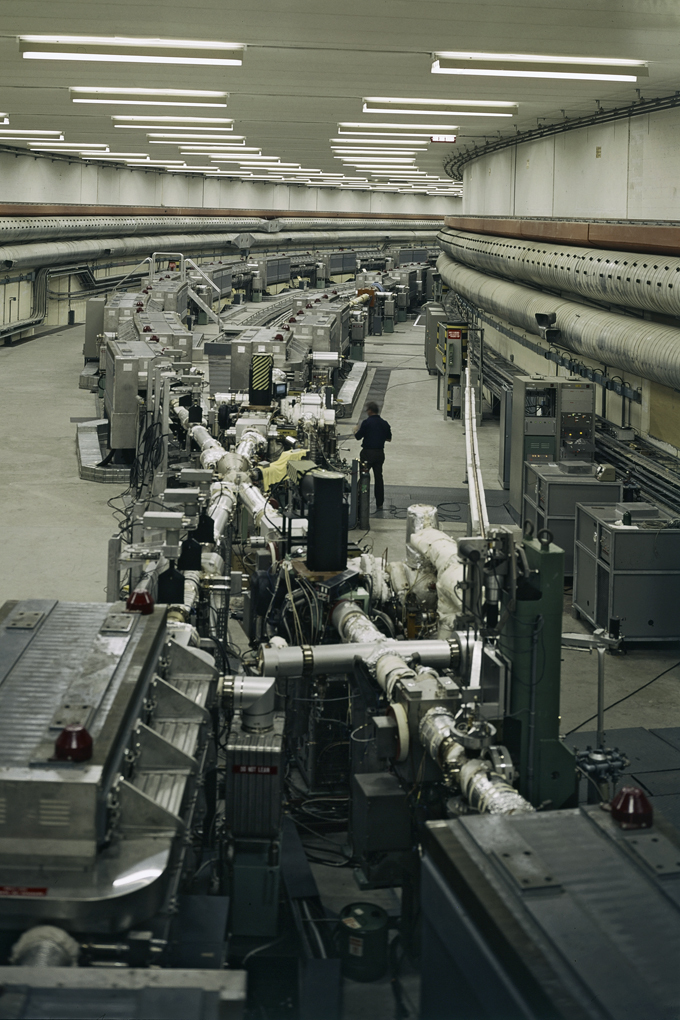CERN70: The world’s first hadron collider
29 May 2024 · Voir en français
Part 10 of the CERN70 feature series. Find out more: cern70.cern
Kjell Johnsen was the Intersecting Storage Rings (ISR) project leader when the accelerator was built

On 27 January 1971, the world’s first collisions between two beams of protons occurred in CERN’s Intersecting Storage Rings (ISR).
By the late 1950s, physicists knew that a huge gain in collision energy would become possible by colliding proton beams head on, rather than using a single beam and a stationary target. However, the price would be relatively low reaction rates and less variety than those produced at a “fixed target” machine.
The particle physicists at CERN mainly worked on fixed-target accelerators, such as the Proton Synchrotron (PS), and they favoured an upgrade of the PS and the construction of the Super Proton Synchrotron (SPS) over building a proton–proton collider. Nevertheless, the accelerator physicists prevailed and the ISR was approved in the December 1965 Council session. Construction began the following year.
The ISR proved to be an excellent instrument for particle physics producing many important results, which have become part of the general background knowledge in particle physics. However, research in accelerator studies was at least as important and led to many technological inventions and developments; for example, the ISR saw the world’s first proton–antiproton collisions, as well as heavy-ion collisions.
The ISR paved the way for future hadron colliders, from the conversion of the SPS into a proton–antiproton collider from 1981 to 1991, which led to the discovery of W and Z bosons in 1983, to the Large Hadron Collider (LHC) and its fabulous discovery of the Higgs boson in 2012.
Recollections
Like all pioneering particle accelerators, the ISR was its own prototype […] we came to see the ISR almost as a sentient thing, a sometimes-difficult colleague even.
Kjell Johnsen

Kjell Johnsen was head of the ISR department and ISR project leader when the accelerator was built.
“There are many stories I could tell, but the one I have chosen sums up well the interaction between man and machine that characterised the ISR. Like all pioneering particle accelerators, the ISR was its own prototype. As a result, we were learning until the last, and we came to see the ISR almost as a sentient thing, a sometimes-difficult colleague even.
Let me return to June 1984, when the word came from CERN’s research board that the ISR was to close. We received the instruction that the beam that was in the machine would be the last, but that the ISR would keep running for as long as we could keep that beam. The machine reflected on this for a moment, then produced a good solid hiccup and spat out the few antiprotons it had circulating. We decided that we couldn’t let the ISR have the final word, and in due course we were granted one more fill. We kept it circulating, and doing good physics, for about 100 hours. The ISR was behaving impeccably until 6 am on 25 June, when we switched it off, one day before the official closing ceremony.
On that occasion, Viki Weisskopf, CERN’s Director-General at the time the ISR project was approved, summed up the ISR’s achievement with the words: “The really important thing about the ISR is its success as an instrument, because that fact did change the landscape of high-energy physics. […] It showed the possibility of doing high-energy physics at much higher energies in the centre-of-mass system. […] After this was done, colliders became the fashion of the day.”

As an accelerator physicist, I find it appropriate to add that this success came thanks to a number of firsts in accelerator physics. The ISR’s first – and main – aim was to collide proton beams and it did this brilliantly over its 13 years lifespan, and with ever increasing luminosity. Of the other firsts, it was at the ISR that stochastic cooling was proven, with antiproton beams being kept for hundreds of hours. It was also at the ISR that protons and antiprotons first collided, and the ISR was the first heavy-ion collider, colliding alpha particles. Ultra-high vacuum techniques, necessary for colliders, came of age at the ISR and it was at the ISR that superconducting magnets were first used with circulating beams.
Many feel that the ISR was switched off in its prime, and this may be true. However, in a world of limited resources, priorities have to be set and the particle physics community decided that the ISR had done its job. To close, I would again like to echo the sentiments of Viki Weisskopf, who pointed out at the closing ceremony that children frequently outshine their parents. As the first hadron collider, the ISR can count among its offspring illustrious machines such as the SPS proton–antiproton collider at CERN, the Tevatron at Fermilab, RHIC at Brookhaven, and perhaps even HERA at DESY. […] The ISR therefore has pride of place in the history of particle physics as founder of an illustrious dynasty.”
----
This interview is adapted from the 2004 book “Infinitely CERN”, published to celebrate CERN’s 50th anniversary. Kjell Johnsen passed away in 2007 at the age of 86, read a tribute to him in the CERN Courier as well as a feature on the ISR, also in the CERN Courier.
